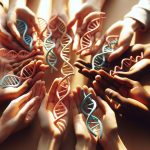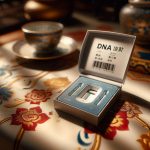Since 1995, JusticeTrax has been at the forefront of providing top-notch Laboratory Information Management Solutions tailored for forensic labs. Catering to a prestigious clientele that includes leading Law Enforcement Agencies and Crime Laboratories across North America, Australia, and the Middle East, they’ve established themselves as a vital player in their field.
In an illuminating conversation, Melissa Bennett, the Product Manager at JusticeTrax, alongside Jenna Oakes-Smith, who heads Customer Care, shared insightful views on how biotechnology intertwines with forensics and law enforcement in our modern era. Their discussion sheds light on the intricate relationship between these sectors as we navigate through the 2020s.
Outline your experience and the organization’s history
At JusticeTrax, we’ve been at the forefront of developing innovative software solutions tailored for forensic laboratories, police departments, and medical examiners’ offices for over two decades. Our comprehensive suite of products seamlessly integrates to enhance the operational efficiency of laboratory environments. Notably, our specialized software caters to forensic DNA analysis, enabling lab personnel to meticulously track samples throughout various stages, upload results promptly, and accurately interpret genetic profiles. Additionally, our platform supports the integration with national DNA databases, streamlining the sharing and comparison of genetic data.
Both holding management positions within JusticeTrax, Melissa serves as the Product Manager while Jenna oversees Customer Care. Their shared background in forensic biology not only enriches their managerial roles but also contributes significantly to product development and customer support.
Melissa’s journey began in a Canadian forensic lab’s biology section where she dedicated six years before transitioning to JusticeTrax 14 years ago. Throughout her tenure, she has assumed multiple roles within the company, showcasing her versatility and commitment. Currently spearheading product management duties, Melissa also excels in feature design – with LIMS-plus DNA being a testament to her capability in turning concepts into reality.
Similarly rooted in forensics is Jenna’s career path which was primarily focused on serology screening essential for legal proceedings during her decade-long stint at a crime lab. Her expertise became instrumental upon joining JusticeTrax. Initially an Implementation Specialist engaged closely with users during the nascent stages of their product offering valuable insights that propelled enhancements underpinning its evolution, thanks largely to Jenna’s domain knowledge facilitating significant contributions alongside Melissa.
Together they exemplify how deep industry knowledge fused with technical innovation can drive forward sophisticated tools that address complex needs within forensic science fields making indispensable contributions towards enhancing justice delivery systems worldwide.
How does LIMS-plus DNA function in straightforward terms?
LIMS-plus DNA is a game-changer for forensic biology laboratories. It’s a specialized tool tailored to meet the unique needs of DNA analysis, distinguishing itself by streamlining the management and tracking of biological samples. Users can easily input data from various sources, including other evidence management systems, into LIMS-plus DNA. This functionality enables efficient organization of samples into batches and plates for processing while meticulously recording each step in the chain of custody.
This application shines when it comes to detailing every movement and location change of samples within the lab. From initial extraction to final detection steps, LIMS-plus DNA captures crucial data including storage details and procedural flow. Beyond mere tracking, it also excels at analyzing outcomes; specifically interpreting genetic profiles derived from allele calls.
Another standout feature is its capability to monitor all lab essentials involved in sample processing – reagents, control materials, standards, and even the instruments used. The ability to directly upload results from these instruments cuts down on manual data entry errors and saves valuable time.
While LIMS-plus DNA does an exceptional job at documenting laboratory workflows—down to generating worksheets that outline all tasks performed—it does not handle the release of Final Analytical Reports directly. That responsibility falls within another component of their system but doesn’t diminish its comprehensive role in supporting forensic biology labs in their quest to process DNA samples efficiently and accurately.
In essence, LIMS-plus DNA isn’t just a piece of software; it’s a robust ally for those committed to unraveling the mysteries locked within our genes with precision and care.
Current issues faced by criminalists and the solutions our product offers

In DNA laboratories, tracking the origins of a sample’s analysis is crucial yet challenging. This includes identifying the specific reagents, kits, instruments, and tubes utilized. Accurately recording and storing this data enables retrospective access when needed. Often, issues such as contamination arise with certain batches of materials or kits that don’t meet quality standards. It’s vital for labs to pinpoint these problems promptly to maintain integrity in their findings.
The community plays a significant role by sharing insights about problematic batches through both formal and informal channels. However, pinpointing which samples are affected can be daunting if records are poorly maintained or only exist in paper form or spreadsheets. Modern databases offer solutions here enabling precise identification of affected samples through advanced searches and reporting tools.
Furthermore, maintaining a Chain of Custody (CoC) is not just about meeting new accreditation requirements—it ensures any sample needing re-examination is traceable back to its origin. In forensic settings where DNA undergoes extraction from sources like blood-stained fabric, tracking progresses from the initial item through every stage—extraction, quantitation amplification, and detection.
Interestingly enough, labs might track cellular material extracted from an original item (like fabric) as it moves through subsequent stages separately. This method emphasizes the distinction between original and derivative samples while ensuring each has its CoC documented.
Efficiently monitoring these processes offers insights into lab workflows—their efficiency and areas needing improvement. Such data mining supports justification for funding grants while giving a clear picture of staff productivity within specified timeframes.
In essence:
– Precise record-keeping aids quick identification of contaminated lots.
– Systematic documentation provides reliability in analytical outcomes.
– Internal communication channels enhance issue resolution efficiencies.
– Database utilization improves problem lot identification without cumbersome manual checks.
– CoC adherence aligns with accreditation demands while adding traceability layers.
– Tracking advances transparency across all operational facets—from workforce efficiency assessments to supporting fiscal allocations for lab sustenance and growth initiatives.
By addressing these key components diligently, DNA labs can significantly uplift their operational standards while fostering trust within their scientific communities and beyond.
Impacts of COVID-19 on Businesses and Their Sectors
Our firm, anchored in Mesa, Arizona, faced a sudden shift from office to home-based work due to unforeseen circumstances last March. Fortuitously, our prior efforts towards achieving ISO 27001 accreditation paid off, ensuring not only robust information security management but also preparedness for any disaster-related contingencies including the loss of our physical workspace. This foresight enabled us to smoothly transition into remote working arrangements. Adapting to remote work involves more than just changing locations; it’s about reinventing how we operate and communicate without the immediate presence of colleagues. Despite these challenges, many are finding the no-commute lifestyle appealing and surprisingly conducive to productivity.
As the situation unfolds in both the US and specifically Arizona, there’s no rush to return to our previous office setup. Financially speaking, we anticipate potential impacts might only surface six months to a year from now due mainly because our clientele—largely governmental bodies—pay annual maintenance fees for software support that could face redirection amidst shifting budget priorities. To mitigate future financial strain, we’re consciously cutting back on non-essential expenditures.
Meanwhile, Jenna‘s insights highlight an immediate benefit our products have offered clients during this transition period. Particularly within crime labs where working remotely posed significant challenges given their reliance on hands-on activities and paper records or non-web-based applications found transitioning difficult compared with those utilizing LIMS-plus DNA. These organizations managed a smoother shift keeping team members productive thanks to easier access electronic data handling capabilities provided by our solutions.
Moreover, we’ve seen increased engagement with JT Academy, our video training platform tailored for lab teams—a testament to its value as an educational resource during times when direct training isn’t feasible.
In essence, while navigating these uncharted waters comes with its share of hurdles—from redefining workspaces to recalibrating business strategies—the collective resilience and adaptability demonstrated by our team and clients alike underscore a path forward enriched with lessons learned and newfound efficiencies unearthed through adversity.
What recent developments or innovations in your area of expertise do you find interesting?
In the realm of customer insights and technological advancements, there are significant shifts on the horizon that demand our attention. One such area gaining traction is forensic genealogy. This method combines traditional ancestry tracing with forensic science to help law enforcement agencies generate leads in their investigations. As its usage becomes more widespread among police departments, it’s likely we’ll see an increasing need for tools that can manage and store related data effectively.
Another key development to watch is the evolution of rapid DNA technology. This innovation promises to revolutionize how DNA profiles are generated, offering results within hours instead of days or weeks. By integrating all steps of the DNA analysis process into a single device, this technology mainly benefits from processing simple, single-source samples—like blood or cheek swabs from individuals directly involved in a case—to either aid in generating investigative leads or facilitate comparisons against CODIS, the U.S. National DNA Databank.
Moreover, there’s a noticeable shift away from traditional STR (Short Tandem Repeats) analysis towards SNP (Single Nucleotide Polymorphisms) analysis. The latter focuses on identifying single nucleotide differences and requires sequencing specific areas on the DNA strand. This change not only affects how results are recorded but also expands the number of DNA regions tested and modifies statistical methods used to determine a profile’s frequency within a population.
As these technologies continue evolving, it’s crucial for us to keep abreast of these changes. We’re committed to staying ahead by incorporating new trends and data generation techniques into our database systems. Our goal is to streamline data mining and reporting processes for labs, making it simpler and more efficient for them to access vital information when they need it most.




















